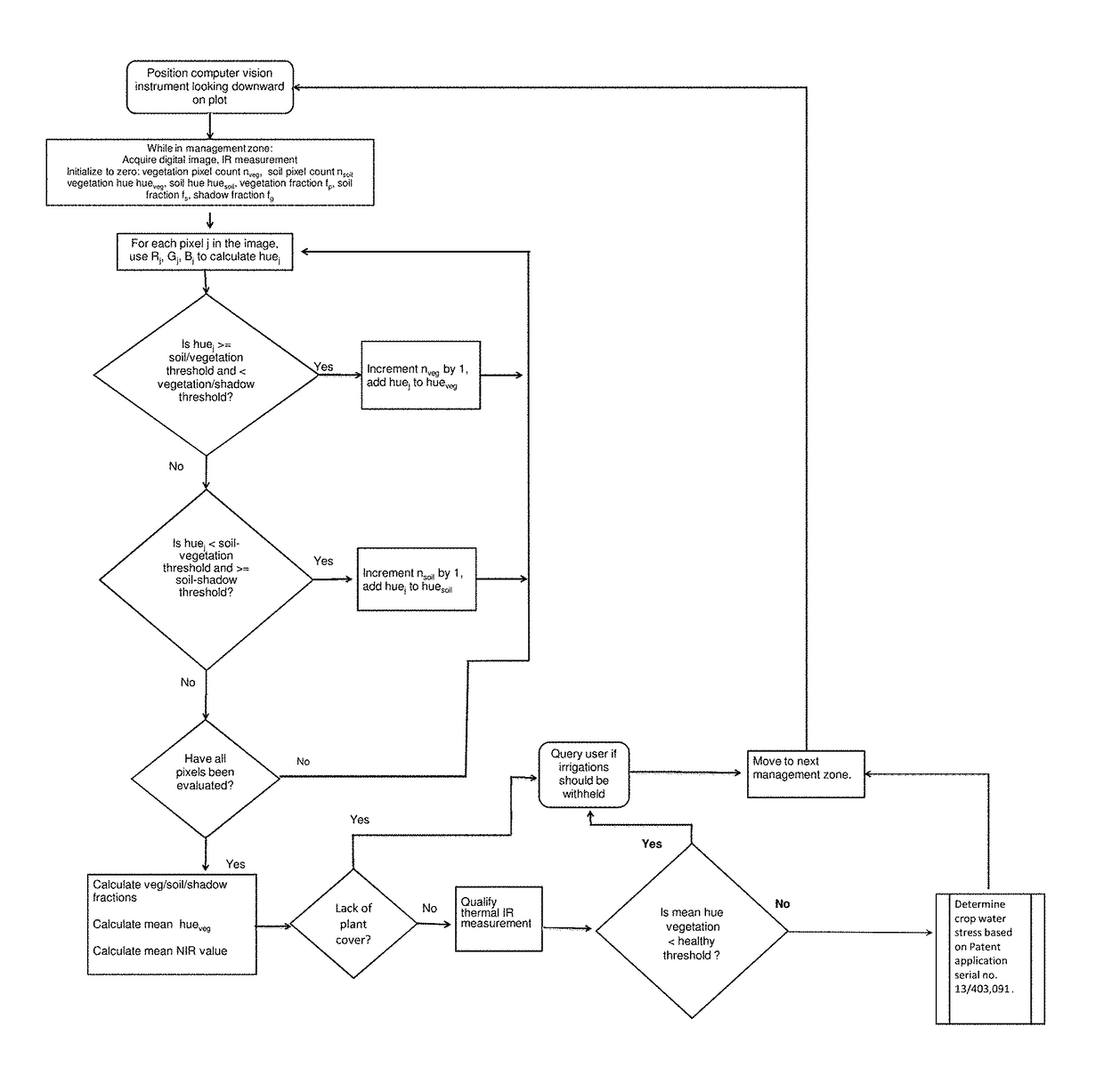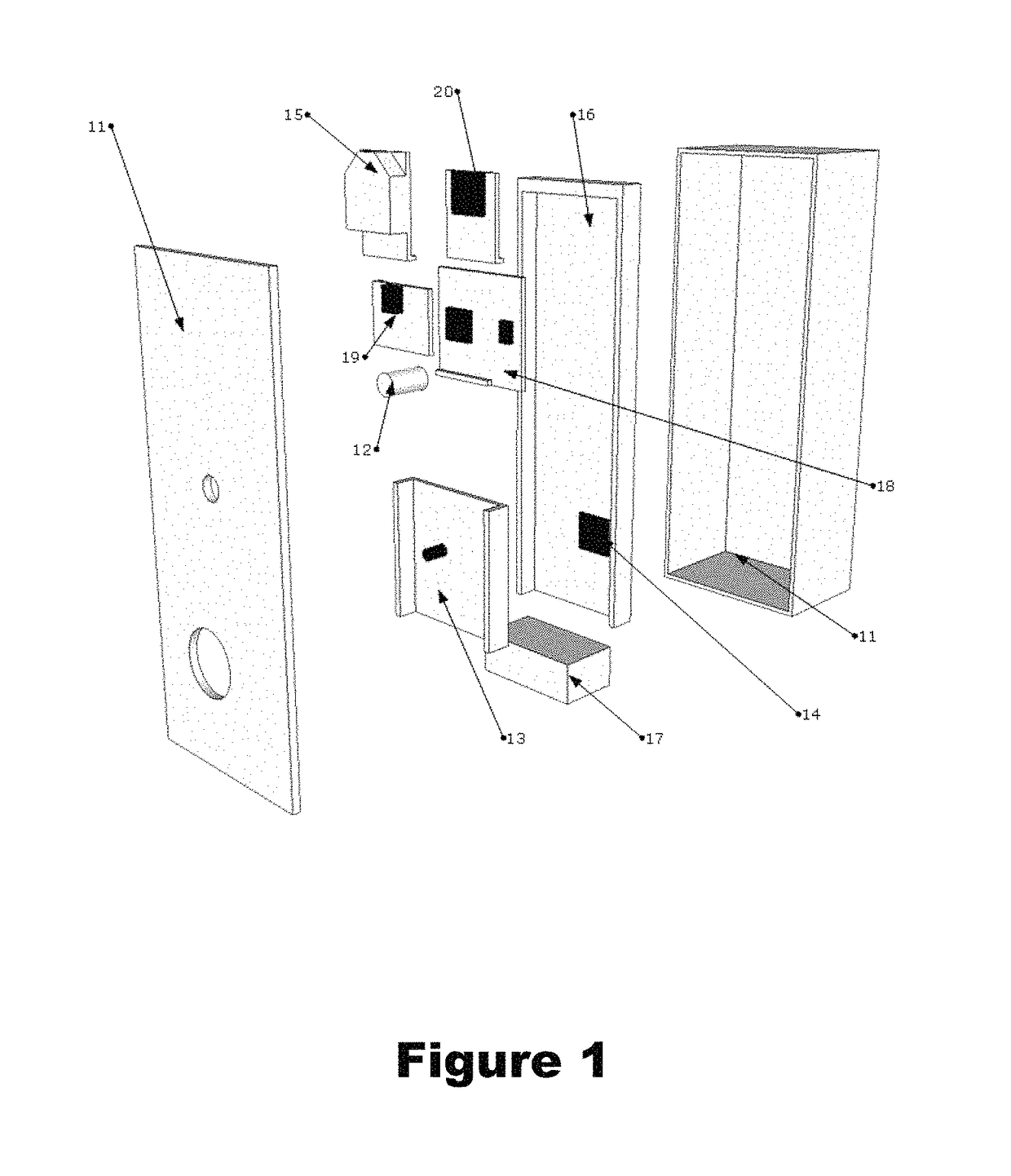Computer vision qualified infrared temperature sensor
a technology of infrared temperature sensor and computer vision, which is applied in the field of computer vision qualified infrared temperature sensor, can solve the problems of inability to accurately and precisely determine the surface temperature of equipment, unfavorable producers' irrigation management, etc., and achieves the effects of reducing false positive irrigation scheduling, increasing plant yield, and increasing efficiency and cost efficacy
- Summary
- Abstract
- Description
- Claims
- Application Information
AI Technical Summary
Benefits of technology
Problems solved by technology
Method used
Image
Examples
Embodiment Construction
[0021]The instrument herein was designed as a single, self-contained unit with an infrared (IR) thermometer for making measurements of plant canopy temperature and a camera acquiring digital images in the NIR range (NIR pass filter), red, green and blue color values (which images provide data representative of the reflected light in all of the NIR, red, green and blue bands). The instrument is capable of processing the R, G, B, NIR and thermal IR intensity data using a microprocessor, storing the data in computer memory and wirelessly transmitting the data to a receiver at a remote location. As shown in FIG. 1, the instrument includes a housing or casing (11) of sufficient size as to contain all of the components therein. The housing may be constructed from a variety of materials, but should be weather-proof to prevent damage to the detectors therein. In a preferred embodiment, the housing is constructed from two or more pieces of rigid sunlight resistant plastic for ease of access....
PUM
 Login to View More
Login to View More Abstract
Description
Claims
Application Information
 Login to View More
Login to View More - R&D
- Intellectual Property
- Life Sciences
- Materials
- Tech Scout
- Unparalleled Data Quality
- Higher Quality Content
- 60% Fewer Hallucinations
Browse by: Latest US Patents, China's latest patents, Technical Efficacy Thesaurus, Application Domain, Technology Topic, Popular Technical Reports.
© 2025 PatSnap. All rights reserved.Legal|Privacy policy|Modern Slavery Act Transparency Statement|Sitemap|About US| Contact US: help@patsnap.com



